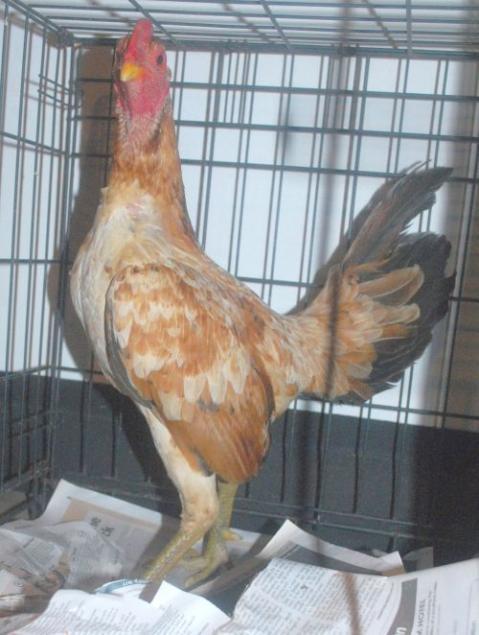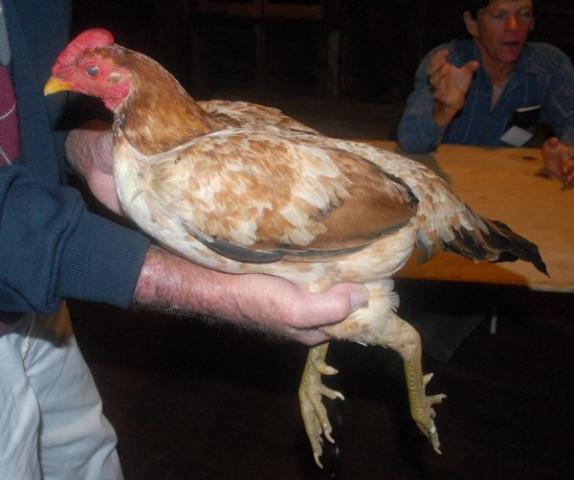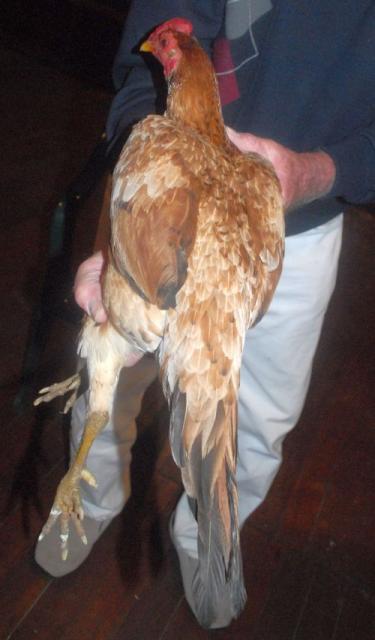- Apr 13, 2018
- 7,162
- 29,667
- 977
Here’s one for the genetics folks....
@The Moonshiner
@nicalandia
@ any one else ...too
... so I crossed a salmon Faverolle rooster with a splash ameraucana hen... but only hatched 3 chicks...
Two of them were darker from the beginning and are feathering in with a “moth wing” pattern on their wing feathers ... not sure what it’d actually be called...
At hatch:

At about a week:

One of them was lighter and is feathering in blue on the wings....
At hatch:

At about a week:

I suspect that the two darker ones are males and the lighter one is a female... and that this is related to the sexual dimorphism of the salmon Faverolle breed ... as shown in this reference image, with the male salmon Faverolle on the top, and the female on the bottom:

But I don’t know what the genetic explination would be.... something to do with the blue gene working on the Wheaton base? Or something else?
If the light vs dark chicks do turn out to be female and male respectively.... is this a reliable sex link cross then?
But could it be that none of this holds water and that the splash ameraucanab was just hiding something under the blue and black genes?
Just curious what I’m seeing here...
Thoughts?
Thanks in advance!
More pics here:
https://www.backyardchickens.com/threads/blue-favaucana.1210277/page-5#post-21340844
@The Moonshiner
@nicalandia
@ any one else ...too
... so I crossed a salmon Faverolle rooster with a splash ameraucana hen... but only hatched 3 chicks...
Two of them were darker from the beginning and are feathering in with a “moth wing” pattern on their wing feathers ... not sure what it’d actually be called...
At hatch:
At about a week:
One of them was lighter and is feathering in blue on the wings....
At hatch:
At about a week:
I suspect that the two darker ones are males and the lighter one is a female... and that this is related to the sexual dimorphism of the salmon Faverolle breed ... as shown in this reference image, with the male salmon Faverolle on the top, and the female on the bottom:
But I don’t know what the genetic explination would be.... something to do with the blue gene working on the Wheaton base? Or something else?
If the light vs dark chicks do turn out to be female and male respectively.... is this a reliable sex link cross then?
But could it be that none of this holds water and that the splash ameraucanab was just hiding something under the blue and black genes?
Just curious what I’m seeing here...
Thoughts?
Thanks in advance!
More pics here:
https://www.backyardchickens.com/threads/blue-favaucana.1210277/page-5#post-21340844






